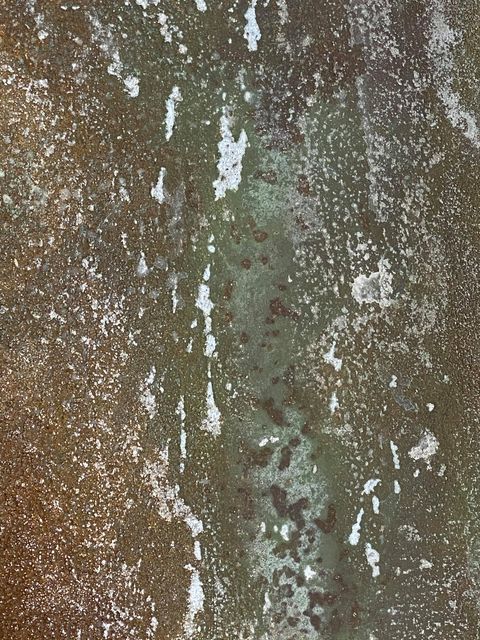How To Fix Ghosting in Concrete
I recently ground, cleaned, and acid stained my basement floor. Even after hours of surface preparation, I still see tile ghosting even after I completely removed them from the floor. Why has this happened and what can be done to fix the problem?
Stick-on tile is commonly used on interior floors, especially basements and older floors. Tile is often left on the concrete for many, many years. The uneven pressure applied to the tile over the years by walking, furniture, and life in general presses the square shape of the tile into the concrete – leaving tile ghosting or a deep alternation of the surface behind.
Unfortunately, the impressions can’t always be seen prior to acid staining and can still be present even after grinding the concrete. Since acid stain is a chemically-reactive concrete colorant, it pools in the lower-lying areas and appears comparably darker than the rest of the floor.
Solution:
The floor still needs to be ground and properly cleaned before staining. Carefully determine if any aggregate or sand particles have been revealed in the grinding process before deciding on a staining product.
Acid Stain can still be used, but it will not color stones or sand visible on the surface. Most customers acid-stain the concrete and then use a topical stain to touch up areas that don’t take the stain well (or where the tile matrix can be seen). Antiquing Concrete Stain is a great option to blend the colors on more porous floors. Concrete dye can also be used to cover imperfections and accent the floor as needed.
Topical stains can disguise the tile ghosting still visible after grinding. One or more Antiquing Stain colors can be used alone after grinding if desired but the finished look will have a more solid, less diffused look when compared to acid stained floors. A combination of tinted concrete sealer and concrete dye is also a good alternative if the floor cannot be successfully acid stained after grinding due to significant exposed aggregate and sand.
Unless you have excellent ventilation to the outside, water based sealers, like the Acrylic High Gloss and Acrylic Satin, are best for use on interior projects. Follow with a concrete floor wax product as the final protective coat.
Common Concrete Antiquing Stain Issues











